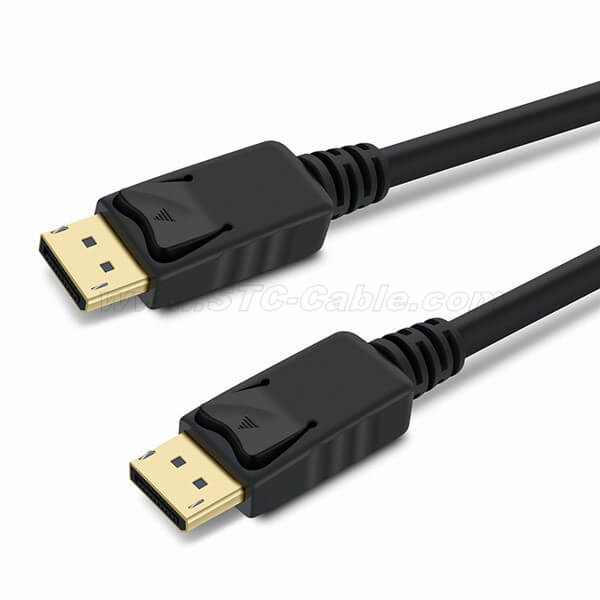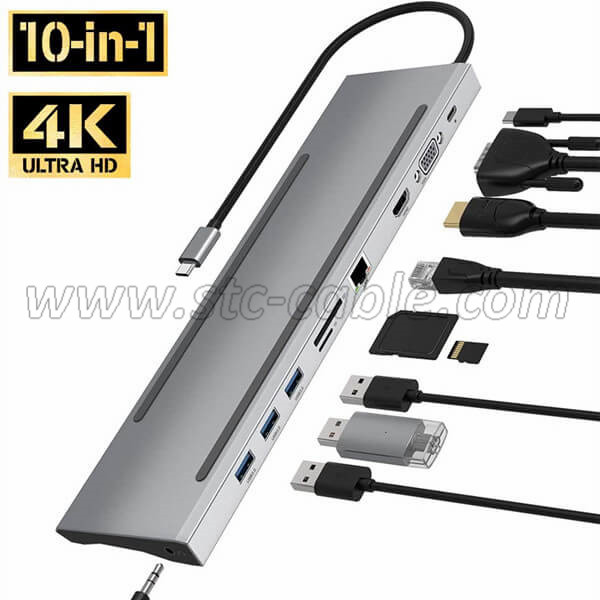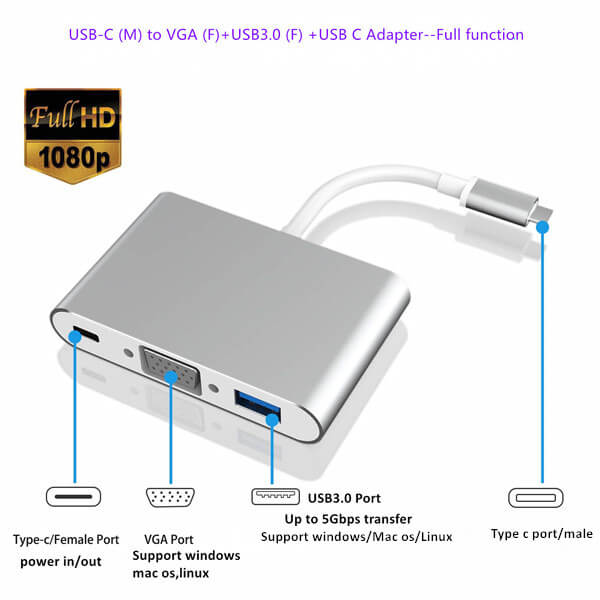If I want to buy a data cable, I need a signal that can supply power and transmit video at the same time. Is there such a data cable?
1. Image sensor data format (image format, software aspects)
1.1 Image sensor data
Generally speaking, 300,000 pixels or 1.3 million pixels, etc., refer to 300,000 or 1.3 million photosensitive points. Each photosensitive point can only be sensitive to one color. Image sensor raw data is in RAW RGB format (one of R, G, B) with only one color per pixel. There will be an ISP module inside the Sensor module, which will perform interpolation and special effects processing on the data collected by the Sensor. For example, if the color sensed by a photosensitive point is R, then the ISP module will be based on the G around the photosensitive point. , B value of the photosensitive point to calculate the G, B value of this point, then, the RGB value of this point is restored, and then encoded into 601 or 656 format and transmitted to the Host. After color interpolation, it becomes RGB. RGB Each pixel has three colors, each with a value between 0 and 255.
1.2 Output data format Image
sensor output format is mainly divided into two types: YUV (more popular), RGB, YCbCr. The image sensor converts the light signal into RGB three primary color electrical signal. Video signal color difference signal Since the original signal in the camera and the final signal in the TV and monitor are all RGB signals, using RGB signals as the transmission and recording method of video signals will undoubtedly have higher image quality. But this is often not the case in practical applications, because firstly, it will greatly widen the bandwidth of the video signal and increase the cost of related equipment; secondly, it is also incompatible with the current black and white TV. For this reason, the three primary color signals are combined into luminance (Y) and chrominance (U, V) signals according to a certain proportion, and the relationship between them is as follows:
Namely: blue difference signal (B-Y), red difference (R-Y) two color difference signals and one luminance signal (Y). The color difference interface has color difference signal output in XBOX, PS2, PS3, DVD. There are color-difference signal input terminals in home TV sets, there are two plugs, one plug is blue for blue difference signal, and one plug is red for red difference signal. The color difference signal can be converted into RGB, YUV, Video and other signals. In order to enable U, V and Y to be transmitted in one frequency band and achieve the purpose of being compatible with the reception of black and white/color video signals, it is necessary to perform quadrature amplitude modulation on these two chrominance signals. Let U(t), V(t) be the chrominance signal, Y(t) be the luminance signal,
RGB
RGB is the most common color space. Among them, RGB is Raw RGB, which is the data obtained by the bayer array of the sensor (each sensor obtains the corresponding color brightness); but the output data is not equal to the actual data of the image. When the module is tested, it is necessary to write a software, Complete data acquisition (obtain Raw data) -> color interpolation (the purpose is to obtain RGB format, which is convenient for image display) -> image display;
YUV
YUV is a basic color difference space, which is used by PAL, NTSC, SECAM to comply with color difference video standards. Y represents brightness, and U and V represent hue.
1.3 Data Coding Standards
(1) Sampling frequency
In order to ensure the synchronization of the signal, the sampling frequency must be a multiple of the horizontal frequency of the TV signal. The common TV image sampling standard formulated by CCIR for NTSC, PAL and SECAM systems: fs=13.5MHz. This sampling frequency is exactly 864 times the line frequency of PAL and SECAM system, and 858 times that of NTSC system, which can guarantee the sampling clock during sampling. Synchronized with the line sync signal. For the sampling format of 4:2:2, the luminance signal is sampled at the frequency of fs, and the two color-difference signals are sampled at the frequency of fs/2=6.75MHz respectively. From this it can be deduced that the minimum sampling rate for the chrominance components is 3.375MHz.
(2) Resolution
According to the sampling frequency, it can be calculated that for PAL and SECAM systems, each scanning line samples 864 sample points; for NTSC system, it is 858 sample points. Since each line in the TV signal includes a certain synchronization signal and retrace signal, there are not so many valid image signal sample points. CCIR 601 stipulates that for all formats, the number of valid sample points in each line is 720 points. Since different systems have different effective lines per frame (576 lines for PAL and SECAM systems, and 484 lines for NTSC systems), CCIR defines 720×484 as the basic standard for High Definition TV (High Definition TV). When the actual computer displays digital video, the parameters in the following table are usually used:
TV system Resolution Frame rate
NTSC 640×480 30
PAL 768×576 25
(3) Data volume
CCIR 601 stipulates that each sample point is digitized by 8 bits, that is, there are 256 levels. But in fact, the luminance signal occupies 220 levels, the chrominance signal occupies 225 levels, and the other bits are used for synchronization, coding and other control purposes. If sampling at the sampling rate of fs and the format of 4:2:2, the data volume of digital video is: 13.5(MHz)×8(bit)+2×6.75(MHz)×8(bit) = 27Mbyte/s It works out that, if sampled 4:4:4, the data volume of digital video is 40 megabytes per second! At a data rate of 27 megabytes per second, a 10-second digital video takes up 270 megabytes of storage space. At this data rate, an optical disc with a capacity of 680 megabytes can only record about 25 seconds of digital video data information, and even the current high-speed optical drive, its data transfer rate is far less than 27 megabytes per second the transmission requirements, the video data will not be able to play back in real time. This kind of uncompressed digital video data volume is unrealistic for current computers and networks to store or transmit. Therefore, the key issue in applying digital video in multimedia is digital video compression technology.
(4) Video compression format
2. Video signal (ie, the voltage and current signal of hardware electronics)
Video signal protocols include RGB/TTL, LVDS, VGA, HDMI, MIPI, TYPE-C, DP, BT656/601, BT1120, DVI, SDI, Camera link, HS-LINK, CoaXPress, SD CVBS, HD analog (AHD, CVI , TVI), COAX-FPD LINK III, etc.
RGB/TTL, MIPI, LVDS are often used for communication between chips; CVBS, VGA, DVI, HDMI, SDI are the most widely used in the field of video conferencing, CVBS, HDMI, and SDI are the most widely used in the field of radio and television, and CVBS, SDI is the most widely used.
--VGA is the abbreviation of Video Graphics Array, which is a common analog output interface of computer. Common resolutions are 1024x768, 1280x1024, 1600x1200.
--HDMI is the abbreviation of High Definition Multimedia Interface, which is a digital high-definition multimedia interface. The maximum video bandwidth of HDMI 1.2 is 3.96 Gbps, which is widely used in industrial cameras, but in the field of consumer electronics, HDMI has now developed to version 2.0, with a maximum video bandwidth of 14.4 Gbps.
--DVI is the abbreviation of Digital Visual Interface, and it is also a common output interface of computer, which is a digital interface.
--HS-LINK interface is defined by DALSA company
--SDI is the abbreviation of Serial Digital Interface. It is a broadcast-grade high-definition digital input and output port. It is often used in the camera interface of broadcast TV. The upper limit of the transmission rate of the SDI interface is 2.97Gbps. The SDI interface uses the same BNC as the CVBS interface. The interface uses a single copper shaft for signal transmission. The wiring construction is very convenient, and the transmission distance can reach 300 meters. It is very popular in the original broadcasting field and security field.
--CVBS is a standard definition analog video signal interface with a resolution of 720x576 (PAL) or 720X480 (NTSC).
--HD simulation
AHD TVI CVI are all upgraded versions of analog cameras, commonly known as coaxial. The three names are just different solutions. Compared with the analog, the effect is clear, and the appearance of the analog is the same as the bnc interface, video cable transmission, advantages All are real-time and smooth, occupying a small storage space, but use a different video recorder from the analog one.
1. CVI, the full name of "High Definition Composite Video Interface" (HDCVI), is a specification independently developed by Zhejiang Dahua Technology Co., Ltd. and announced at the end of 2012;
2. TVI, the full name of "High Definition Transport Video Interface" (HDTVI), was developed by Techpoint Inc from Silicon Valley in the United States, and is currently the main promotion of Hangzhou Hikvision Digital Technology Co., Ltd. Specification
3.AHD, the full name of "Analog High Definition", is an analog high-definition solution launched by South Korea's Nextchip Company.
CVI, TVI, and AHD realize high-definition transmission on coaxial cables, and the transmission distance increases significantly; they all have the effect of higher definition and no bright color crosstalk compared with ordinary analog; compared with SDI, the transmission is farther, and the anti-interference ability is strong; Compared with the network HD, it has the characteristics of no delay, lossless image, and convenient operation.
-- AHD analog high-definition camera is a kind of analog camera. It operates the same as traditional analog equipment. It is transmitted by ordinary video line SYV-75-3 or 75-5 coaxial line, but it can achieve low-cost, long-distance, anti- Interference, latency-free megapixel high-definition video transmission.
--HDTVI high-definition video transmission interface camera, which is a high-definition video transmission specification based on coaxial cable. HDCVI high-definition composite video high-definition video camera is a high-definition video transmission specification based on coaxial cable, using analog modulation technology to transmit progressive scan high-definition video. HDCVI technology adopts self-adaptive technology with independent intellectual property rights, which ensures that at least 500 meters of high-quality high-definition video can be transmitted on coaxial cables with specifications of 75-3 and above, breaking the transmission limit of existing high-definition video transmission technology. In use, CVI, TVI, and AHD all follow the methods and methods of analog SD transmission, which can reduce the complexity of construction deployment, reduce the cost of auxiliary materials and maintenance complexity, as well as the technical requirements for construction personnel; suitable for the upgrade of old systems The transformation can easily upgrade the standard definition to high-definition without changing the original system. CVI, TVI, AHD analog high-definition difference
Send your message to us:
Post time: Apr-19-2022



